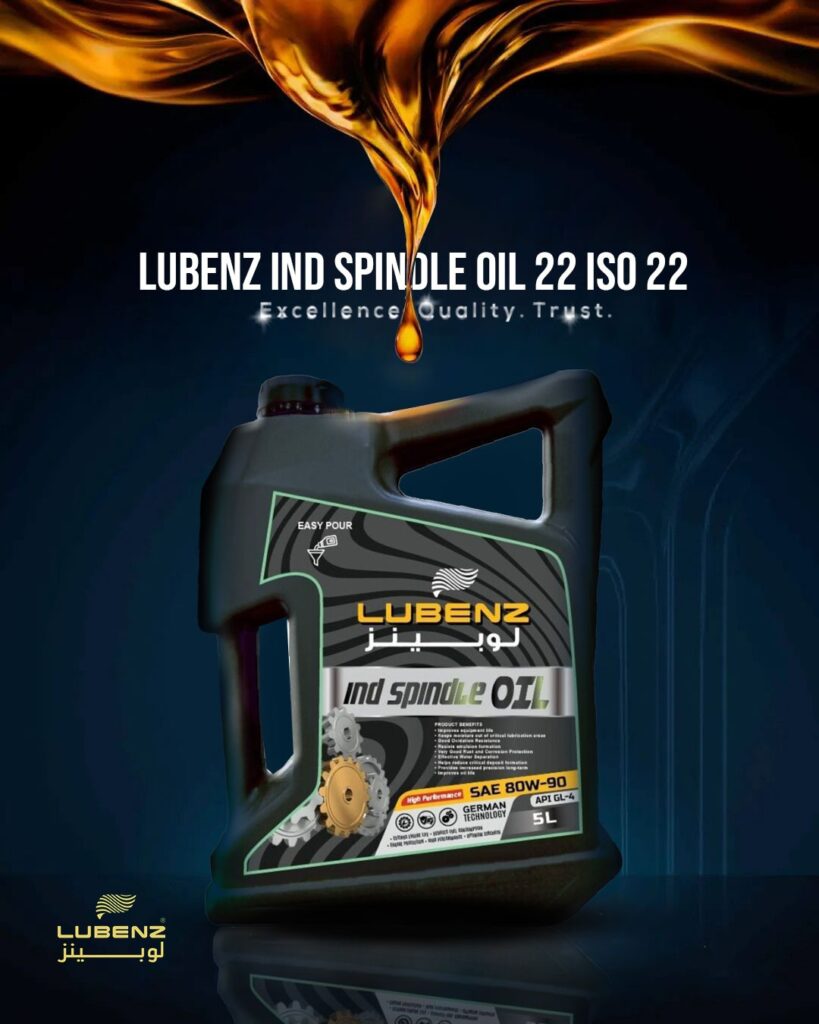LUBRICANTS wholesaler in Iraq
LUBRICANTS supplier in Iraq
Lubricants are substances used to reduce friction between surfaces in contact with each other. They are crucial for the smooth operation and longevity of machinery and equipment in various industries. Here are some key points about lubricants:
Function: Lubricants primarily function by forming a thin film or layer between moving parts. This film reduces friction, which in turn lowers wear and tear on components, decreases heat generation, and improves overall efficiency.
Types: There are different types of lubricants tailored to specific applications:
Mineral Oils: Derived from crude oil, these are the most common type of lubricants and include engine oils, hydraulic fluids, and gear oils.
Synthetic Lubricants: Engineered for higher performance and stability across a wide range of temperatures and conditions. They include synthetic motor oils, compressor oils, and high-temperature greases.
Biodegradable Lubricants: Environmentally friendly options that break down more easily and have minimal impact if leaked or spilled.
Specialty Lubricants: Designed for unique applications such as food-grade lubricants for the food processing industry or aviation lubricants for aircraft engines.
Components: Lubricants typically consist of:
Base Oils: Provide lubrication and carry additives.
Additives: Enhance performance by improving viscosity, reducing oxidation, preventing corrosion, and providing specific properties like extreme pressure protection.
Applications: Lubricants are used in a wide range of applications including:
Automotive: Engine oils, transmission fluids, and greases.
Industrial: Hydraulic fluids, compressor oils, turbine oils, and metalworking fluids.
Marine: Lubricants for ship engines and marine equipment.
Aerospace: Specialized lubricants for aircraft engines and components.
Importance: Proper lubrication:
Prolongs machinery life by reducing friction and wear.
Improves energy efficiency by reducing frictional losses.
Enhances reliability and reduces downtime by preventing equipment failures.
Helps maintain operational safety by reducing overheating and component failures.
Quality Standards: Lubricants must meet specific industry and regulatory standards to ensure performance and safety. Standards are often set by organizations like the American Petroleum Institute (API) and the International Organization for Standardization (ISO).
In summary, lubricants play a critical role in ensuring the efficient and reliable operation of machinery and equipment across various sectors, contributing to improved productivity and reduced maintenance costs.
Lubrication is the process of applying a lubricant to reduce friction between surfaces in contact, thereby enhancing the efficiency and longevity of machinery and equipment. Here's a detailed explanation of lubrication:
Key Concepts of Lubrication:
Friction Reduction: The primary purpose of lubrication is to minimize frictional resistance between moving parts. Friction occurs when two surfaces rub against each other, causing resistance and generating heat. Lubricants create a thin film or layer between these surfaces, allowing them to slide or roll over each other smoothly.
Wear Protection: Lubricants help protect surfaces from wear and tear caused by friction. By forming a protective barrier, lubricants prevent direct metal-to-metal contact, reducing surface damage, and extending the operational life of machinery and equipment.
Heat Dissipation: Efficient lubrication aids in dissipating heat generated during frictional contact. By reducing friction, lubricants minimize heat buildup, which can otherwise lead to overheating and damage to components.
Load Bearing Capacity: Lubricants also enhance the load-bearing capacity of machinery by reducing frictional forces. This property is crucial in heavy-duty applications where equipment operates under high loads and stress conditions.
Sealing and Contamination Control: Some lubricants also act as seals to prevent the ingress of contaminants such as dirt, dust, and water into machinery. Contamination control is essential for maintaining lubricant integrity and prolonging equipment life.
Types of Lubrication:
Fluid Film Lubrication: In this type of lubrication, a continuous film of lubricant separates the moving surfaces. It can be further classified into:
Hydrodynamic Lubrication: Where the motion of the surfaces generates pressure that supports the load.
Boundary Lubrication: Where the lubricant forms a boundary layer on the surfaces, reducing friction and wear.
Boundary Lubrication: In this type, the lubricant reduces friction and wear between surfaces, without a complete film separating the surfaces.
Lubricants:
Base Oils: These are the primary components of lubricants, providing the main lubricating properties. Base oils can be mineral oils derived from crude oil or synthetic oils formulated for specific performance characteristics.
Additives: Lubricants often contain additives to enhance their performance under various conditions. Additives may include antioxidants to prevent oxidation, anti-wear agents to reduce wear, viscosity modifiers to maintain viscosity at different temperatures, and detergents to keep engines clean.
Applications:
Automotive: Lubricants are essential for engines, transmissions, and differentials in vehicles. They ensure smooth operation, reduce wear, and extend engine life.
Industrial: Lubricants are used in machinery and equipment across various industries, including manufacturing, mining, construction, and agriculture, to maintain operational efficiency and reliability.
Marine: Lubricants are crucial for marine engines, gears, and hydraulic systems, providing protection against saltwater corrosion and ensuring reliable performance in maritime environments.
Aerospace: Specialized lubricants are used in aircraft engines and components to withstand extreme temperatures, pressures, and environmental conditions.
Importance:
Lubrication is essential for:
Reducing friction: Enhancing efficiency and reducing energy consumption.
Preventing wear: Extending equipment life and reducing maintenance costs.
Ensuring reliability: Maintaining consistent performance and minimizing downtime.
In summary, lubrication is a fundamental aspect of machinery operation, ensuring smooth and efficient performance across diverse applications and industries. Proper lubrication practices are critical for maximizing equipment lifespan, minimizing operational costs, and supporting overall productivity and reliability.
Lubrication plays a critical role in ensuring the efficient and reliable operation of machinery and equipment across various industries. Here are the key highlights of lubrication:
Friction Reduction: Lubricants create a barrier between moving surfaces, reducing friction and allowing components to move smoothly without excessive resistance. This minimizes wear and heat generation, improving efficiency and extending equipment life.
Wear Protection: By preventing direct metal-to-metal contact, lubricants protect surfaces from wear and tear. This is crucial for maintaining the integrity of machine components and avoiding costly repairs or replacements.
Heat Dissipation: Effective lubrication helps dissipate heat generated during frictional contact. By reducing heat buildup, lubricants prevent overheating and thermal damage to machinery, ensuring consistent performance under varying operating conditions.
Load Bearing Capacity: Lubricants enhance the load-bearing capacity of machinery by reducing frictional forces. This is particularly important in heavy-duty applications where equipment operates under high loads and stress.
Contamination Control: Some lubricants act as seals, preventing contaminants such as dirt, dust, and water from entering machinery. This helps maintain lubricant integrity and prolong equipment life by minimizing the risk of corrosion and abrasive wear.
Versatility: Lubricants are versatile and tailored for specific applications and operating conditions. Different types of lubricants, such as mineral oils, synthetic oils, and greases, offer varying viscosity, temperature stability, and performance characteristics to meet diverse industrial needs.
Specialized Applications: Lubricants are used in automotive engines, industrial machinery, marine equipment, aerospace components, and more. Each application requires specific lubrication properties to optimize performance, reliability, and operational efficiency.
Environmental Benefits: Proper lubrication contributes to energy efficiency by reducing frictional losses, which can lead to lower energy consumption and reduced carbon emissions. Additionally, efficient lubrication practices support environmental sustainability by extending equipment life and reducing waste.
Quality and Standards: Lubricants must meet stringent quality standards and specifications set by organizations such as the American Petroleum Institute (API) and the International Organization for Standardization (ISO). Compliance ensures consistent performance, reliability, and safety in industrial operations.
Maintenance and Cost Savings: Regular lubrication maintenance schedules help prevent equipment breakdowns and costly repairs. Proper lubrication practices not only extend equipment life but also reduce overall maintenance costs and improve operational reliability.
In essence, lubrication is essential for optimizing machinery performance, protecting against wear and heat, enhancing operational efficiency, and ensuring long-term reliability across various industrial applications.
lubricants new advancement technology
In recent years, advancements in lubricant technology have focused on enhancing performance, durability, and environmental sustainability. Here are some notable advancements:
LUBRICANTS manufacturer in Iraq LUBRICANTS manufacturer in Iraq LUBRICANTS manufacturer in Iraq LUBRICANTS manufacturer in IraqLUBRICANTS manufacturer in Iraq LUBRICANTS manufacturer in Iraq LUBRICANTS manufacturer in Iraq LUBRICANTS manufacturer in Iraq LUBRICANTS manufacturer in Iraq LUBRICANTS manufacturer in Iraq LUBRICANTS manufacturer in Iraq LUBRICANTS manufacturer in Iraq LUBRICANTS manufacturer in Iraq LUBRICANTS manufacturer in Iraq LUBRICANTS manufacturer in Iraq
Nanotechnology in Lubricants: Nanomaterials, such as nanoparticles and nanotubes, are being incorporated into lubricants to improve their lubricating properties. These additives can enhance wear resistance, reduce friction, and improve thermal stability under extreme conditions.
Bio-based Lubricants: There is a growing trend towards bio-based lubricants derived from renewable sources such as plant oils and animal fats. These lubricants offer biodegradability, lower toxicity, and reduced environmental impact compared to traditional mineral oils.
Synthetic Lubricants: Advances in synthetic base oils and additives have led to lubricants that offer superior performance in terms of viscosity stability, oxidation resistance, and temperature tolerance. Synthetic lubricants are increasingly used in high-performance applications where extreme conditions demand exceptional lubrication properties.
Smart Lubrication Systems: IoT (Internet of Things) technology is being integrated into lubrication systems to monitor conditions in real-time, optimize lubricant application, and predict maintenance needs. Sensors and data analytics help improve efficiency, reduce downtime, and extend equipment life.
Tribology and Surface Engineering: Research in tribology (the science of friction, wear, and lubrication) has led to the development of advanced surface coatings and treatments that enhance lubricant performance. These coatings reduce friction, improve wear resistance, and prolong lubricant effectiveness.
Environmentally Friendly Additives: Lubricant manufacturers are developing additives that enhance performance while meeting stringent environmental regulations. These include additives that improve biodegradability, reduce emissions, and minimize environmental impact during disposal.
High-Performance Lubricants for Specific Industries: Lubricant formulations are increasingly tailored to meet the specific needs of industries such as automotive, aerospace, marine, and industrial manufacturing. This customization ensures optimal performance and reliability in diverse operating environments.
Energy Efficiency: Lubricants designed for improved energy efficiency help reduce frictional losses in machinery, leading to lower energy consumption and reduced operating costs. This is particularly significant in industries where energy efficiency and sustainability are priorities.
Additive Technology: Advanced additive packages enhance lubricant properties such as viscosity index, oxidation stability, anti-wear protection, and corrosion resistance. These additives are continuously evolving to meet the evolving demands of modern machinery and equipment.
Digitalization and Predictive Maintenance: Digital technologies enable predictive maintenance strategies by monitoring lubricant condition, equipment performance, and environmental factors. This proactive approach helps optimize lubricant usage, prevent failures, and reduce maintenance costs.
These advancements reflect ongoing innovations aimed at improving lubricant performance, sustainability, and reliability across various industries, contributing to enhanced operational efficiency and reduced environmental impact.
lubrication positive impacts
Lubrication offers several positive impacts across industries and applications, contributing to enhanced efficiency, longevity of equipment, and overall operational reliability. Here are the key positive impacts of effective lubrication:
Reduced Friction and Wear: Lubricants create a protective barrier between moving surfaces, reducing friction and minimizing wear and tear on machinery components. This helps extend equipment lifespan and reduce maintenance costs associated with repairs and replacements.
Improved Energy Efficiency: By reducing frictional losses, lubricants improve the overall energy efficiency of machinery and equipment. Engines, gears, and other moving parts operate more smoothly, requiring less energy to overcome friction and perform their tasks.
Enhanced Performance: Proper lubrication ensures machinery operates at optimal performance levels. It helps maintain consistent speed, power output, and reliability, which are critical for industrial processes, automotive performance, and other applications.
Heat Dissipation: Lubricants help dissipate heat generated during operation by reducing friction. This prevents overheating of components, which can lead to thermal degradation and equipment failures. Efficient heat management contributes to prolonged equipment life and reliability.
Noise Reduction: Lubricants reduce the noise generated by moving parts, creating quieter and more comfortable working environments. This is particularly important in settings where noise levels impact worker productivity and safety.
Corrosion Prevention: Some lubricants include additives that protect metal surfaces from corrosion caused by moisture and chemical exposure. This helps maintain equipment integrity, especially in harsh operating conditions such as marine environments or industrial settings.
Environmental Benefits: Advances in lubrication technology have led to formulations that are more environmentally friendly. Bio-based lubricants and additives with lower toxicity and reduced emissions help minimize environmental impact during production, use, and disposal.
LUBRICANTS manufacturer in Iraq LUBRICANTS manufacturer in Iraq LUBRICANTS manufacturer in Iraq LUBRICANTS manufacturer in Iraq LUBRICANTS manufacturer in Iraq LUBRICANTS manufacturer in Iraq LUBRICANTS manufacturer in Iraq LUBRICANTS manufacturer in Iraq LUBRICANTS manufacturer in Iraq LUBRICANTS manufacturer in Iraq LUBRICANTS manufacturer in Iraq LUBRICANTS manufacturer in Iraq LUBRICANTS manufacturer in Iraq LUBRICANTS manufacturer in Iraq LUBRICANTS manufacturer in Iraq LUBRICANTS manufacturer in Iraq LUBRICANTS manufacturer in Iraq LUBRICANTS manufacturer in Iraq LUBRICANTS manufacturer in Iraq LUBRICANTS manufacturer in Iraq
Operational Reliability: Regular lubrication maintenance schedules and the use of high-quality lubricants enhance equipment reliability. Machinery downtime due to mechanical failures or breakdowns is reduced, leading to improved productivity and operational continuity.
Cost Savings: Effective lubrication practices result in significant cost savings over the long term. Reduced maintenance and repair costs, lower energy consumption, and extended equipment life contribute to overall operational efficiency and profitability.
Compliance with Standards: Lubricants that meet industry standards for performance, safety, and environmental impact ensure compliance with regulatory requirements. This protects businesses from liabilities and demonstrates a commitment to responsible operational practices.
In summary, lubrication plays a crucial role in optimizing machinery performance, ensuring equipment reliability, and achieving operational efficiency across various industries. Its positive impacts extend beyond mechanical functions to encompass environmental sustainability, cost-effectiveness, and compliance with industry standards.
While lubrication offers numerous benefits, there are also potential negative impacts associated with improper use or inadequate management of lubricants. Here are some of the key negative impacts to consider:
Contamination and Degradation: Improperly stored or handled lubricants can become contaminated with dirt, moisture, or other substances. Contaminants can degrade the lubricant's performance, reduce its effectiveness, and potentially cause damage to machinery components over time.
Compatibility Issues: Mixing incompatible lubricants or using the wrong type of lubricant for specific equipment can lead to chemical reactions or breakdowns. This can compromise lubrication properties, reduce equipment efficiency, and increase the risk of mechanical failures.
Environmental Impact: Lubricants contain additives and base oils that can be harmful to the environment if improperly disposed of or leaked into soil or waterways. Certain additives may be toxic or persistent in the environment, posing risks to ecosystems and wildlife.
Health and Safety Risks: Exposure to lubricants, especially in high concentrations or over prolonged periods, can pose health risks to workers. Some lubricants contain chemicals that may irritate the skin, eyes, or respiratory system. Proper handling and use of personal protective equipment (PPE) are essential to mitigate these risks.
Performance Degradation: Using degraded or expired lubricants can lead to decreased performance and efficiency of machinery. Over time, lubricants can break down, lose viscosity, or become contaminated, resulting in increased friction, wear, and potential equipment downtime.
Operational Issues: Inadequate lubrication practices, such as under-lubrication or over-lubrication, can adversely affect equipment operation. Under-lubrication can lead to excessive wear and overheating, while over-lubrication can cause leakage, buildup of deposits, and inefficient energy usage.
Cost Implications: Poor lubrication practices can result in increased maintenance and repair costs due to premature equipment failure or downtime. Additionally, the cost of disposing of used lubricants responsibly adds to operational expenses.
Regulatory Compliance: Failure to comply with environmental regulations regarding the handling, storage, and disposal of lubricants can result in fines, penalties, or legal liabilities for businesses. It is crucial to adhere to applicable laws and standards to avoid legal consequences.
Complexity in Selection: Choosing the right lubricant for specific applications and operating conditions requires expertise and understanding of equipment requirements. The wide variety of lubricants available can make selection challenging, potentially leading to suboptimal choices if not properly informed.
Impact on Productivity: Unexpected equipment failures or interruptions caused by lubrication issues can disrupt workflow and productivity in industrial operations. Planned maintenance and regular lubrication audits are essential to minimize such disruptions.
In conclusion, while lubrication is essential for ensuring machinery efficiency and longevity, it is crucial to implement proper management practices to mitigate potential negative impacts. This includes selecting the right lubricants, following recommended maintenance schedules, ensuring proper storage and handling, and complying with environmental and safety regulations. Maintaining a proactive approach to lubrication management helps maximize the benefits while minimizing risks and operational challenges.



